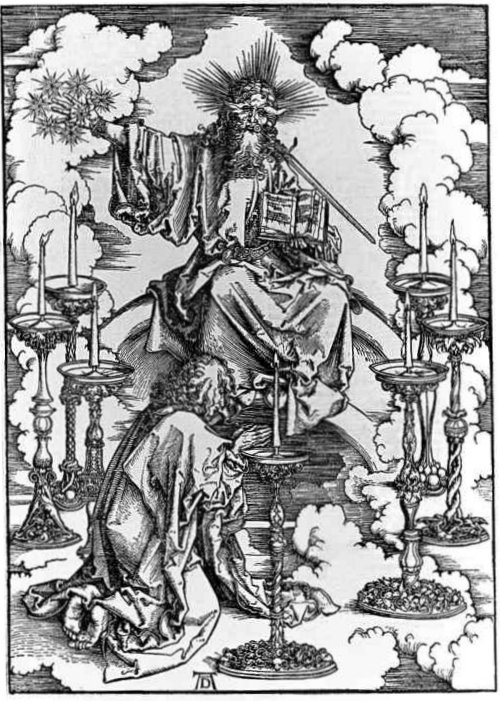Revelation 1:12
Share
John is about to enter into the experience of many other prophets who were given a revelation of the glory of the Lord, usually near the beginning of their prophetic ministry. We think of Moses (Ex. Ex. 33:22-23; Ex. 34:5-6), Ezekiel (Eze. Eze. 1:1), Isaiah (Isa. Isa. 6:1), Daniel (Dan. Dan. 10:5-6), and Paul (Acts Acts 9:3; Acts 22:6). John had been given a previous taste of God’s glory on the Mount of Transfiguration with Peter and James (Mtt. Mat. 17:1; Mark Mark 9:2; Luke Luke 9:29).1
St. John Beholding the Seven Candelabra

The symbolism of these lampstands is explained: “the seven lampstands which you saw are the seven churches” (Rev. Rev. 1:20+). The churches bear light, but are not the source of light (Mtt. Mat. 5:14-16; John John 1:4-5, John 1:7-9; John 5:32-35; Eph. Eph. 5:11-13; Php. Php. 2:15).
The “seven candlesticks” . . . are intended to send us back, to the seven-branched candlestick, or candelabrum, which bears ever the same name of λυχνία [lychnia] in the Septuagint (Ex. Ex. 25:31 cf. Heb. Heb. 9:2); the six arms of which with the central shaft . . . made up the mystical seven, each with its several lamp (λύχνος [lychnos] , Zec. Zec. 4:2).3
See Interpreting Symbols. See symbolic meaning of seven.Notes
1 Interestingly, John is the only gospel writer who does not record his experience on the Mount of Transfiguration except if John John 1:14 be taken as a reference to it.
2 Albrecht Durer (1471 - 1528). Image courtesy of the Connecticut College Wetmore Print Collection.
3 Richard Chenevix Trench, Commentary on the Epistles to the Seven Churches in Asia (Eugene, OR: Wipf and Stock Publishers, 1861), 23.